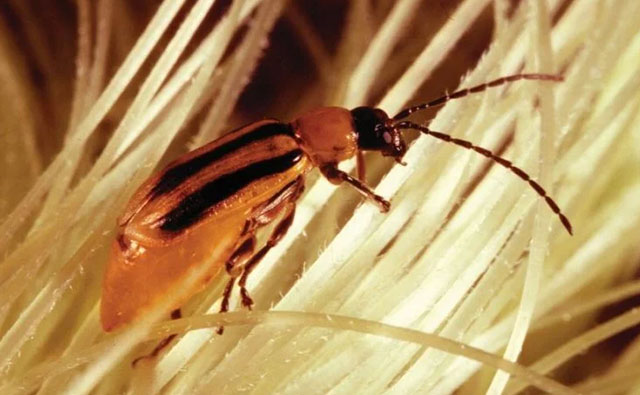The most popular use of insect attractants is to lure pests to traps for control via the mass trapping strategy. Attractants can also be used to induce beneficial insects to come to and stay in crops for goals such as enhanced pollination or natural pest protection.
Insect repellents are agents that are used to protect the body from the bites of insects that can cause local or systemic effects. Whilst some bites cause only local skin irritation, some can cause serious illnesses and possibly death as the insects act as carriers or vectors of diseases.
Below we list products that can be used in insect attractants and insect repellents:
Insect Attractants:
- Estragole CAS NO:140-67-0
Estragole can be obtained by fractionation of turpentine or tarragon oil or by the reaction of allyl bromide with magnesium p-methoxyphenol.Estragole is a known attractant of the African oil palm weevil (Elaeidobius kamerunicus), which pollinates oil palms (Elaeis guineensis).
- Methyl Cyclopentenolone CAS NO:1120-73-6/80-71-7/765-70-8
Methyl Cyclopentenolone (MCP) has strong caramel aroma.The dual-choice arena bioassays showed that a mixture of pet food and methyl cyclopentenolone elicited the strongest attraction in N. rufipes adults, suggesting that this mixture can be used as lure in monitoring traps.
- β-Caryophyllenol CAS NO:32214-88-3/472-97-7
β-caryophylenol is an important tricyclic sesquiterpenoid alcohol, which can be widely used in fragrance and pharmaceutical manufacturing industries. At present, β-caryophylene is prepared from β-caryophylene by hydration reaction.
Bactrocera dorsalis and B. correcta are serious pests of agricultural fruit crops. Both species are widely distributed in tropical and subtropical countries, especially in Asia. Based on the olfactometer results, this study concluded that 3-carene and the mixture of β-caryophyllene and α-humulene are strong attractants for female flies of B. dorsalis and B. correcta, respectively.
Insect repellant:
- Isolongifolenone CAS NO:23747-14-0
Isolongifolenone appears white or light green crystal or powder with woody and amber odor. It is produced by the oxidation reaction of isolongifolene.
We show that (-)-isolongifolenone deters the biting of the mosquitoes, Aedes aegypti (L.) and Anopheles stephensi Liston, more effectively than the widely used synthetic chemical repellent, N,N-diethyl-3-methyl benzamide (DEET), in laboratory bioassays.
The compound also repelled blacklegged ticks, Ixodes scapularis Say, and lone star ticks, Amblyomma americanum (L.), as effectively as DEET. Isolongifolenone is easily synthesized from inexpensive turpentine oil feedstock. We are therefore confident that the compound has significant potential as an inexpensive and safe repellent for protection of large human populations against blood-feeding arthropods.
- Menthoglycol(p-Menthane-3,8-diol) CAS NO:42822-86-6/50373-36-9
p-Menthane-3,8-diol, also known as para-menthane-3,8-diol, PMD, or menthoglycol, is an organic compound classified as a diol and a terpinoid. p-Menthane-3,8-diol is extracted from essential oil of Eucalyptus citriodora or obtained by emi-synthesis from natural citronellal (from Eucalyptus citriodora oil).p- Menthane-3,8-diol, a well-known repellent active against mosquitoes, from Essential oil of Eucalyptus citriodora becomes a great alternative to DEET.(https://foreverest.cn/news-list/pmd-citriodiol-as-a-great-alternative-to-deet)
- Citronella Oil CAS NO:8000-29-1
Citronella oil appears pale yellow liquid with strong pepper odor. It is obtained by steam distillation of citronella grass. The main components are citronellal, geraniol and citronellol.Citronella oil (CO) has been reported to possess a mosquito-repellent action, it’s an ideal insect repellant.
- Carvacrol CAS NO:499-75-2
Carvacrol is also called isothymol, a natural monoterpene derivative of cymene. It is colorless to pale yellow liquid with spicy odor as thymol. Carvacrol is naturally found in many essential oils especially in thyme oil.Carvacrol has been reported to have expressively enhanced larvicidal, ovicidal, acute and fumigant activities against insects.
- Cedarwood oil CAS NO:8000-27-9
Cedar oil, also known as cedarwood oil, is an essential oil derived from coniferous species such as pine and cypress, the main components of Cedar oil are α-cedrene, β-cedrene and cedrol.
Natural Cedarwood Oil is effective at both killing and repelling insects (cedar trees produce the oil to protect themselves from bugs and other pests).Cedar oil is even safe enough that the FDA has approved it as a food preservative, used to kill bacteria and fungus in foods. Cedar Oil comes from nature and is safe for people, pets, wildlife and birds, when used as directed. It’s even safe for beneficial insects like ladybugs, butterflies, and praying mantis.
Spray Cedarwood Oil to rid your landscape of many insects such as ants, gnats, ticks, fleas, chiggers, and mosquitoes. Apply the diluted mixture in the morning or evening for best results. Repeat after rainfall or every few weeks. Stronger mixtures give better results.
To control lawn pests like grubs, web worms, or chinch bugs, apply the diluted product as a soil drench and then water in. Cedarwood Oil kills lawn pests fast and also prevents lawn diseases. Spray cedar oil to keep insects at bay and to keep your lawn healthy.
- Citronellyl Acetate CAS NO:67601-05-2/150-84-5/ 67650-82-2
Citronellyl acetate is a monoterpenoid. It is the acetate ester of citronellol and is naturally found in citriodora oil and Citronella oil.Citronellyl acetate shows fungicidal, larvicidal, bactericidal and repelling.
- Eucalyptol (1, 8 Cineole) CAS NO:470-82-6
1,8 cineole is naturally found in many essential oils, especially in eucalyptus globulus oil. It is colorless liquid with fresh camphor odor and a spicy, cooling taste.
It is extensively used in formulation for mosquito repellents, biological pesticide, etc.
- Litsea cubeba oil CAS NO:68855-99-2
Litsea cubeba oil is derived from the fruits, leaves and roots of litsea cubeba through the process of steam distillation. It appears light yellow clear liquid with lemon odor.
Litsea cubeba oil has repellent effects on various growth forms of mosquitoes and insects.

